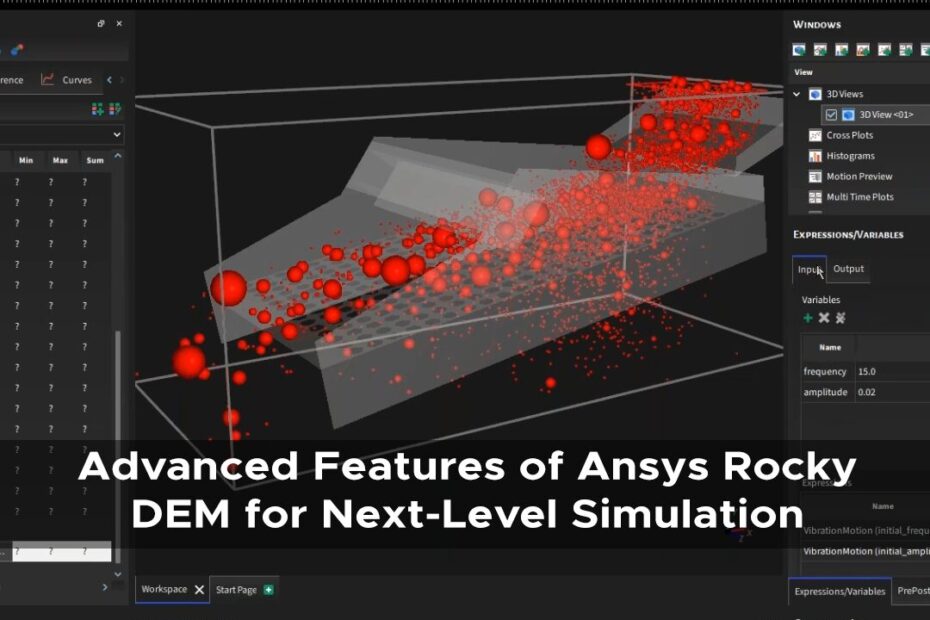LEAP recently ran a webinar where we took a dive deep into the cutting-edge capabilities of Ansys Rocky DEM. The session showcased how advanced features like OptiSLang integration, robust API capabilities, and Multi-GPU acceleration can transform your simulation experience.
In this post we have provided the webinar recording along with a summary of the information covered – read on to discover how to streamline your workflows, enhance your model precision, and dramatically reduce simulation times. Whether you’re tackling complex particle interactions or optimising your designs, the aim of this article is to equip you with the tools to elevate your projects and drive innovation.
In the first clip below, Josh Hately, Rocky Product Manager at LEAP provided a quick overview of Ansys Rocky’s capabilities as well as details on useful Rocky resources and contacts including LEAP’s technical team. Watch for a quick refresher on Rocky’s capabilities or skip ahead to the next video to jump straight into the advanced features deep dive.
Angelo Christakakis, Application Engineer at LEAP then kicks off the core of the presentation with a look at the APIs available within Rocky. Angelo also explains some of the ready-made modules available within the Rocky SDK including models for bonding, liquid bridging and drying, particle freezing and more.
Next, Angelo demonstrates the Rocky APIs in action, explaining how to enable them and providing some examples as to why you might use them.
In the following clip Angelo provides an overview of how Rocky can be integrated with OptiSLang, a powerful optimisation tool, to enable reduced order modelling, rapid design optimisation and automated workflows that can integrate multiple different applications or solvers.
Finally, Angelo explains the benefits of GPU computing and discusses the key considerations when it comes to selecting the right GPU hardware for your needs. As well as covering hardware minimum requirements and the performance metrics that are generally the most impactful upon Rocky solve times, Angelo also provides data on how different particle types can impact the overall speed of your simulations, especially when solving using GPU.
As always we hope that you found this article informative. If you have questions or would like further information about getting the most out of Ansys Rocky, please don’t hesitate to reach out to our technical team.

